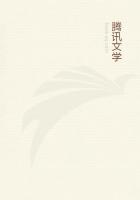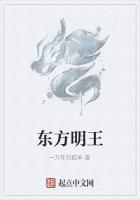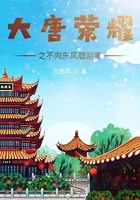No one not a latter-day, structural botanist could see why the TALL, FLAT-TOP WHITE ASTER (Doellingeria umbella) is now an outcast from the aster tribe into a separate genus.This common species of moist soil and swamps has its numerous small heads (containing ten to fifteen rays each) arranged in large, terminal, compound clusters (corymbs).The stem, which rises from two to eight feet, has its long-tapering, alternate leaves, hairy on the veins beneath and rough margined.
Late in the fall you may hear the rich tone of a Bombilius, one of the commonest flies seen about flowers, as he darts rapidly among the white asters.Unless you have been initiated, you may mistake this fly for a bee.He sings a very similar song and wears a similar dress; but he is not a very good imitation, after all, and a little familiarity with him will give you courage to catch him in your hand if you are quick enough, for he is incapable of stinging or biting: he can merely make a noise out of all proportion to his size.He is simply living from hour to hour, and lays up no store for the winter, enjoying more or less security from his resemblance to the industrious and dangerous insect which he imitates.
DAISY FLEABANE; SWEET SCABIOUS
(Erigeron annus) Thistle family Flower-heads - Numerous, daisy-like, about 1/2 in.across; from 40 to 70 long, fine, white rays (or purple- or pink-tinged), arranged around yellow disk florets in a rough, hemispheric cup whose bracts overlap.Stem: Erect, to 4 ft.high, branching above, with spreading, rough hairs.Leaves: Thin, lower ones ovate, coarsely toothed, petioled; upper ones sessile, becoming smaller, lance-shaped.
Preferred Habitat: Fields, wasteland, roadsides.
Flowering Season: May-November.
Distribution: Nova Scotia to Virginia, westward to Missouri.
At a glance one knows this flower to be akin to Robin's plantain (q.v.) the the asters and daisy.A smaller, more delicate species, with mostly entire leaves and appressed hairs (E.
ramosus; E.strigosum of Gray) has a similar range and season of bloom.Both soon grow hoary-headed after they have been fertilized by countless insects crawling over them (Erigeron =early old).That either of these plants, or the pinkish, small-flowered, strong-scented SALT-MARSH FLEABANE (Pluchea camphorata), drive away fleas, is believed only by those who have not used them dried, reduced to powder, and sprinkled in kennels, from which, however, they have been known to drive away dogs.
GROUNDSEL-BUSH or -TREE; PENCIL-TREE
(Baccharis halimifolia) Thistle family Flower-heads: White or yellowish tubular florets, 1 to 5 in peduncled clusters.Staminate and pistillate clusters on different shrubs; the former almost round at first, the latter conspicuous only when seeding; then their pappus is white, and about 1/3 in.long.Stem: A smooth, branching shrub, 3 to 10 ft.
high.Leaves: Thick, lower ones ovate to wedge-shaped, coarsely angular-toothed; upper ones smaller, few-toothed or entire.
Preferred Habitat: Salt marshes, tidewater streams, often far from the coast.
Flowering Season: September-November Distribution: The Atlantic and Gulf coasts from Maine to Texas.
When the little bright white, silky cockades, clustered at the ends of the branches, appear on a female groundsel-bush in autumn, our eyes are attracted to the shrub for the first time.
But had not small pollen carriers discovered it weeks before, the scaly, glutinous cups would hold no charming, plumed seeds ready to ride on autumn gales.Self-fertilization has been guarded against by precarious means, but the safest of all devices -separation of the ***es on distinct plants.These are absolutely dependent, of course, on insect messengers - not visitors merely.
Bees, which always show less inclination to dally from one species of flower to another than any other guests, and more intelligent directness of purpose when out for business are the groundsel-bush's truest benefactors.This is the only shrub among the multitudinous composite clan that most of us are ever likely to see.
PEARLY or LARGE-FLOWERED EVERLASTING; IMMORTELLE; SILVER LEAF;MOONSHINE; COTTON-WEED; NONE-SO-PRETTY
(Anaphalis margaritacea; Antennaria margaritacea of Gray)Thistle family Flower-heads - Numerous pearly-white scales of the involucre holding tubular florets only; borne in broad, rather flat, compound corymbs at the summit.Stem: Cottony, to 3 ft.high, leafy to the top.Leaves: Upper ones small, narrow, linear; lower ones broader, lance-shaped, rolled backward, more or less woolly beneath.
Preferred Habitat - Dry fields, hillsides, open woods, uplands.
Flowering Season - July-September.
Distribution - North Carolina, Kansas, and California, far north.
When the small, white, overlapping scales of an everlasting's oblong involucre expand stiff and straight, each pert little flower-head resembles nothing so much as a miniature pond lily, only what would be a lily's yellow stamens are in this case the true flowers, which become brown in drying.It will be noticed that these tiny florets, so well protected in the center, are of two different kinds, separated on distinct heads: the female florets with a tubular, five-cleft corolla, a two-cleft style, and a copious pappus of hairy bristles; the staminate, or male, florets more slender, the anthers tailed at the base.
Self-fertilization being, of course, impossible under such an arrangement, the florets are absolutely dependent upon little winged pollen carriers, whose sweet reward is well protected for them from pilfering ants by the cottony substance on the wiry stem, a device successfully employed by thistles also (q.v.).

